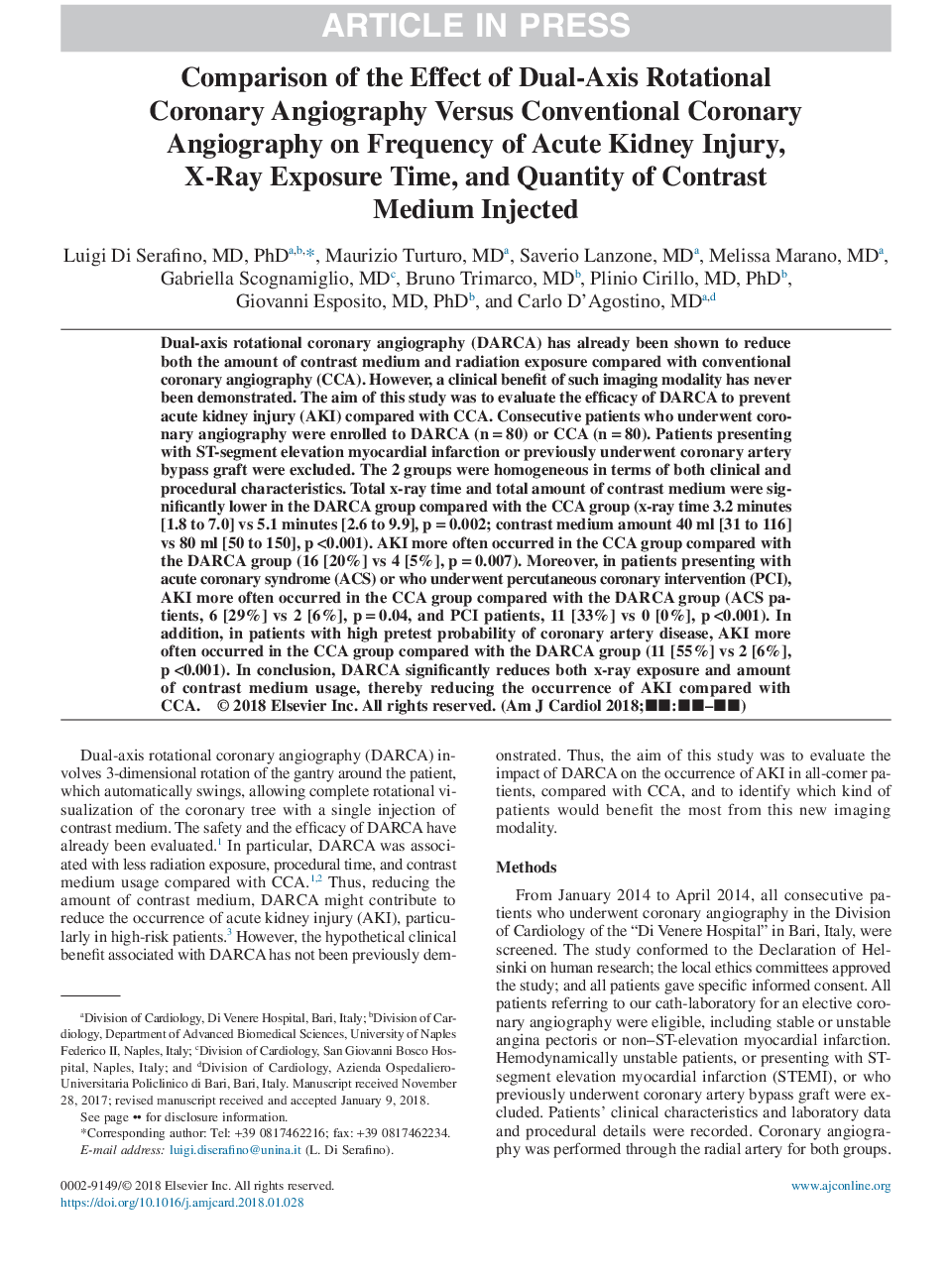| Article ID | Journal | Published Year | Pages | File Type |
|---|---|---|---|---|
| 8651304 | The American Journal of Cardiology | 2018 | 5 Pages |
Abstract
Dual-axis rotational coronary angiography (DARCA) has already been shown to reduce both the amount of contrast medium and radiation exposure compared with conventional coronary angiography (CCA). However, a clinical benefit of such imaging modality has never been demonstrated. The aim of this study was to evaluate the efficacy of DARCA to prevent acute kidney injury (AKI) compared with CCA. Consecutive patients who underwent coronary angiography were enrolled to DARCA (nâ=â80) or CCA (nâ=â80). Patients presenting with ST-segment elevation myocardial infarction or previously underwent coronary artery bypass graft were excluded. The 2 groups were homogeneous in terms of both clinical and procedural characteristics. Total x-ray time and total amount of contrast medium were significantly lower in the DARCA group compared with the CCA group (x-ray time 3.2 minutes [1.8 to 7.0] vs 5.1 minutes [2.6 to 9.9], pâ=â0.002; contrast medium amount 40âml [31 to 116] vs 80âml [50 to 150], pâ<0.001). AKI more often occurred in the CCA group compared with the DARCA group (16 [20%] vs 4 [5%], pâ=â0.007). Moreover, in patients presenting with acute coronary syndrome (ACS) or who underwent percutaneous coronary intervention (PCI), AKI more often occurred in the CCA group compared with the DARCA group (ACS patients, 6 [29%] vs 2 [6%], pâ=â0.04, and PCI patients, 11 [33%] vs 0 [0%], pâ<0.001). In addition, in patients with high pretest probability of coronary artery disease, AKI more often occurred in the CCA group compared with the DARCA group (11 [55%] vs 2 [6%], pâ<0.001). In conclusion, DARCA significantly reduces both x-ray exposure and amount of contrast medium usage, thereby reducing the occurrence of AKI compared with CCA.
Related Topics
Health Sciences
Medicine and Dentistry
Cardiology and Cardiovascular Medicine
Authors
Luigi MD, PhD, Maurizio MD, Saverio MD, Melissa MD, Gabriella MD, Bruno MD, Plinio MD, PhD, Giovanni MD, PhD, Carlo MD,
